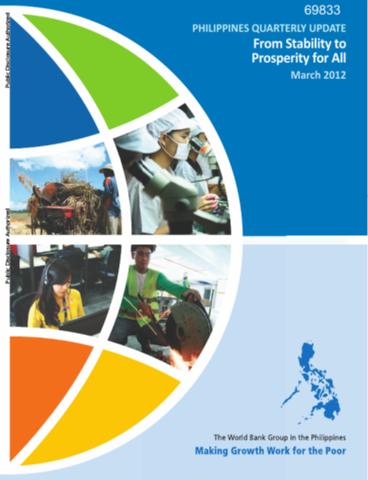The World Bank is a vital source of financial and technical assistance to developing countries around the world. We are not a bank in the ordinary sense but a unique partnership to reduce poverty and support development. The World Bank Group has two ambitious goals: End extreme poverty within a generation and boost shared prosperity.
- To end extreme poverty, the Bank's goal is to decrease the percentage of people living on less than $1.25 a day to no more than 3% by 2030.
- To promote shared prosperity, the goal is to promote income growth of the bottom 40% of the population in each country.
The World Bank Group comprises five institutions managed by their member countries.
The World Bank Group and Land: Working to protect the rights of existing land users and to help secure benefits for smallholder farmers
The World Bank (IBRD and IDA) interacts primarily with governments to increase agricultural productivity, strengthen land tenure policies and improve land governance. More than 90% of the World Bank’s agriculture portfolio focuses on the productivity and access to markets by small holder farmers. Ten percent of our projects focus on the governance of land tenure.
Similarly, investments by the International Finance Corporation (IFC), the World Bank Group’s private sector arm, including those in larger scale enterprises, overwhelmingly support smallholder farmers through improved access to finance, inputs and markets, and as direct suppliers. IFC invests in environmentally and socially sustainable private enterprises in all parts of the value chain (inputs such as irrigation and fertilizers, primary production, processing, transport and storage, traders, and risk management facilities including weather/crop insurance, warehouse financing, etc
For more information, visit the World Bank Group and land and food security (https://www.worldbank.org/en/topic/agriculture/brief/land-and-food-security1
Resources
Displaying 4026 - 4030 of 4907Philippines Quarterly Update, March 2012
The Philippine economy grew slower than expected at 3.7 percent in 2011, held back by weak public spending and external demand. In the fourth quarter (Q4), growth slightly improved at 3.7 percent. As in past quarters, growth was driven by remittance-fueled household consumption, which grew by 6.7 percent. The government's disbursement acceleration plan was partially successful and contributed 1.3 percentage points (ppt) to gross domestic product, or GDP growth in Q4, up from 0.3 ppt in Q3, but this was not enough to push growth up to the targeted level of around five percent.
Linkages within Institutional Structure: An Empirical Analysis of Water Institutions
Taking water institutions as an illustrative context, this paper attempts a quantitative analysis of the structural and functional linkages within institutional structure and indicates their performance implications and strategic importance for promoting institutional reforms.
Old Livelihoods In New Weather
Focuses on the impacts of climate change on reindeer husbandry in the Arctic and local adaptation techniques that could be useful and cooperation for others that need to be developed and shared.
Real Estate Regulations in Accra: Some Macroeconomic Consequences?
Ghana has been one of the most rapidly growing economies in sub-Saharan Africa. This growth has been aided by Ghana's improving policy environment. In light of this, the paper addresses the question of why, given its higher level of per capita income and relatively strong growth, the housing conditions of the poor in Accra are considerably worse than those in a number of other African cities with lower incomes. There are not many data available to answer this question, so the method is indirect and takes two approaches.
Productivity and Efficiency of Small and Large Farms in Transition: Evidence from Moldova
Transition to market-oriented agriculture has been characterized in all the CIS countries by a massive shift from large-scale "agricultural enterprises" to small family farms. The comparative efficiency of these two categories of farms is thus a topical issue for agriculture in transition counties. This article uses national agricultural statistics for Moldova for 1990-2006 and cross-section data from three farm surveys conducted in 2000-2003 to analyze the productivity of small individual farms and large corporate farms in Moldova.







